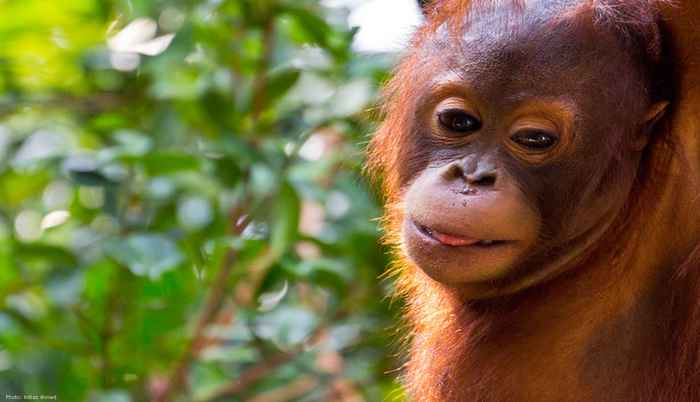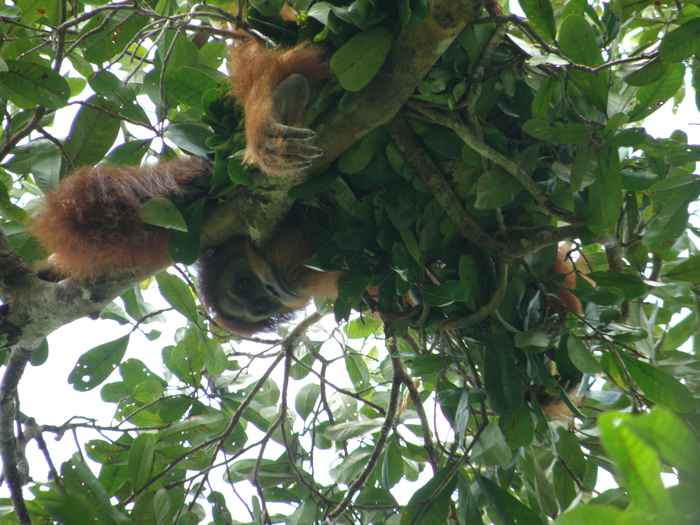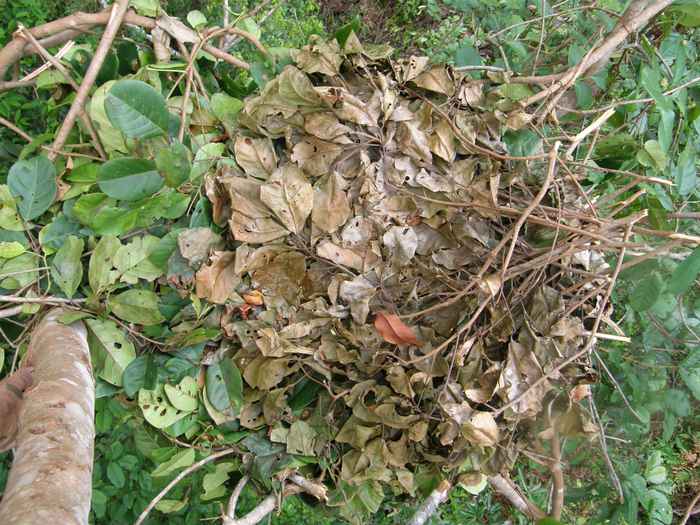Orangutan bed-making: a cultural affair
1 November 2022

Bed habits
Like us humans, orangutan live by many day-to-day routines. One of the most understudied daily habits of the orangutan is their nest building behaviour. “All great apes build nests for rest and sleep, but orangutans are the most prolific nest builders,” Andrea Permana expains. Despite their large size - adult males weigh up to 90 kg - orangutans always build their nests high up in the trees. Chimpanzees are known to adapt their nests to bad weather conditions. Orangutans have elevated their bed-habits by altering their nest environment, adding mattresses, pillows, blankets and building a roof. “Understanding the function and complexity of nest building will deepen our understanding of the cognitive abilities and the extent of cultural repertoires in orangutans, which are generally considered the least technological of the great apes,” Permana adds.
Cultural differences
Mastering the skill of nest building takes about seven years. Infant orangutans watch closely as their mothers build their nests and practice what they see. As the youngsters approach weaning age, they start watching other adults and try to perfect their craft. Permana travelled to Sumatra and Borneo to study the nest blueprints of orangutan beds. She followed individual orangutans from nest to nest and closely examined how each nest was build. “At Suaq Balimbing, Sumatra, orangutans used two types of nest frame and seven different nest architectural patterns. At Sebangau, Borneo, orangutans I found just one nest pattern but five different types of pillow.” Permana explains. Interestingly, orangutan mothers pass on their preference for specific tree species to build nests based on traditions and local culture.


Building on
The results of Permana’s research highlight the extend in which orangutans use their intelligence and cultural preference to provide for their basic need to sleep in a safe and comfortable space. It supports the idea that nest building has played a major role in the individual fitness and brain function of these great apes, which has almost certainly benefited the success of common evolutionary ancestors. Permana adds: “The knowledge, skills and choices of the orangutans within their local culture demonstrated in this study underlines the need to maintain or reforest suitable orangutan habitats and corridors.”
On Thursday 27 October Andrea Permana defended her PhD thesis in the Agnietenkapel in Amsterdam. She plans to return to Borneo and Sumatra to continue studying nest culture across orangutan populations.